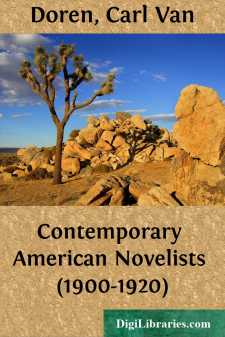Categories
- Antiques & Collectibles 13
- Architecture 36
- Art 48
- Bibles 22
- Biography & Autobiography 813
- Body, Mind & Spirit 142
- Business & Economics 28
- Children's Books 15
- Children's Fiction 12
- Computers 4
- Cooking 94
- Crafts & Hobbies 4
- Drama 346
- Education 46
- Family & Relationships 57
- Fiction 11828
- Games 19
- Gardening 17
- Health & Fitness 34
- History 1377
- House & Home 1
- Humor 147
- Juvenile Fiction 1873
- Juvenile Nonfiction 202
- Language Arts & Disciplines 88
- Law 16
- Literary Collections 686
- Literary Criticism 179
- Mathematics 13
- Medical 41
- Music 40
- Nature 179
- Non-Classifiable 1768
- Performing Arts 7
- Periodicals 1453
- Philosophy 64
- Photography 2
- Poetry 896
- Political Science 203
- Psychology 42
- Reference 154
- Religion 513
- Science 126
- Self-Help 84
- Social Science 81
- Sports & Recreation 34
- Study Aids 3
- Technology & Engineering 59
- Transportation 23
- Travel 463
- True Crime 29
Contemporary American Novelists (1900-1920)
by: Carl Van Doren
Description:
Excerpt
CHAPTER I
OLD STYLE
1. LOCAL COLOR
A study of the American novel of the twentieth century must first of all take stock of certain types of fiction which continue to persist, with varying degrees of vitality and significance, from the last quarter of the century preceding.
There is, to begin with, the type associated with the now moribund cult of local color, which originally had Bret Harte for its prophet, and which, beginning almost at once after the Civil War, gradually broadened out until it saw priests in every state and followers in every county. Obedient to the example of the prophet, most of the practitioners of the mode chose to be episodic rather than epic in their undertakings; the history of local color belongs primarily to the historian of the short story. Even when the local colorists essayed the novel they commonly did little more than to expand some episode into elaborate dimensions or to string beads of episode upon an obvious thread. Hardly one of them ever made any real advance, either in art or reputation, upon his earliest important volume: George Washington Cable, after more than forty years, is still on the whole best represented by his Old Creole Days; and so—to name only the chief among the survivors—after intervals not greatly shorter are Mary N. Murfree ("Charles Egbert Craddock") by In the Tennessee Mountains, Thomas Nelson Page by In Ole Virginia, Mary E. Wilkins Freeman by A Humble Romance and Other Stories, James Lane Allen by Flute and Violin, and Alice Brown by Meadow-Grass.
The eager popular demand for these brevities does not entirely account for the failure of the type to go beyond its first experimental stage. The defects of local color inhere in the constitution of the cult itself, which, as its name suggests, thought first of color and then of form, first of the piquant surfaces and then—if at all—of the stubborn deeps of human life. In a sense, the local colorists were all pioneers: they explored the older communities as solicitously as they did the new, but they most of them came earliest in some field or other and found—or thought—it necessary to clear the top of the soil before they sank shaft or spade into it. Moreover, they accepted almost without challenge the current inhibitions of gentility, reticence, cheerfulness. They confined themselves to the emotions and the ideas and the language, for the most part, of the respectable; they disregarded the stormier or stealthier behavior of mankind or veiled it with discreet periphrasis; they sweetened their narratives wherever possible with a brimming optimism nicely tinctured with amiable sentiments. Poetic justice prospered and happy endings were orthodox. To a remarkable extent the local colorists passed by the immediate problems of Americans—social, theological, political, economic; nor did they frequently rise above the local to the universal. They were, in short, ordinarily provincial, without, however, the rude durability or the homely truthfulness of provincialism at its best....


